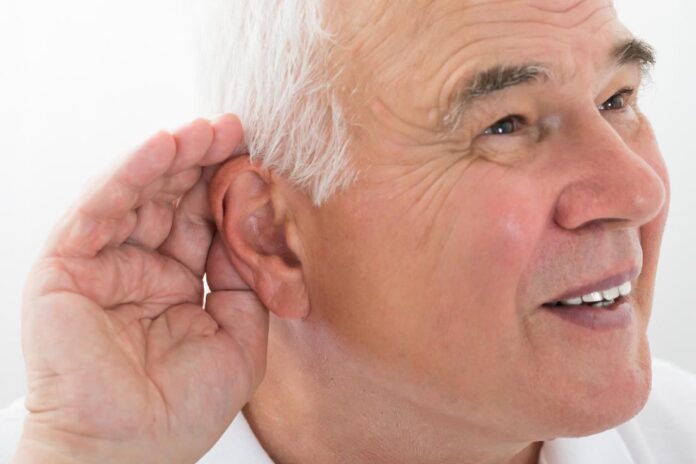Hearing loss is a serious problem. It affects all aspects of a person’s life. One of its first symptoms is difficulty communicating. The inability to hear certain letters, words, or phrases means the hearing impaired often has to ask the interlocutor to repeat some phrases. This makes it difficult to communicate well and can cause confusion. The difficulty in communicating increases along with hearing loss. Can I improve the quality of the conversation and make it easier for hearing impaired? Yes, if you use non-verbal signs
Why does it matter?
Hearing loss affects a person’s quality of life, especially during communication. When we can’t hear each other, we can’t communicate the way we used to, which can lead to various problems, including social isolation, low self-esteem, and even depression.
One of the main problems with hearing loss is that it makes it difficult to understand other people’s speech. When we can’t hear what other people are saying, we can’t participate in a conversation the way we used to. Such a problem can force a person to avoid talking to other people, which, in turn, can lead to social isolation and a decreased quality of life.
In addition, hearing loss can make a person feel uncomfortable in public places. Loud noises can be disturbing and uncomfortable to a person with hearing loss. As a result, the hearing impaired begins to avoid going to public places such as cafes, restaurants, and theaters.
Hearing loss often leads to low self-esteem and even depression. When somebody cannot hear other people, they may feel inferior and unfit for communication. Such a course of action can lead to mood deterioration and even psychological disorders.
It’s important to seek help from professionals to cope with hearing loss. Doctors specializing in hearing loss can help you choose the right hearing aid to help you improve your hearing and make communication easier. Other methods can also make you more comfortable when communicating. For example, nonverbal signs.
Does nonverbal communication work?
Some people doubt the effectiveness of non-verbal communication. But they are wrong. Non-verbal signs can be very important for hearing impaired because they allow them to better understand situations and communicate with others. Here are some reasons why nonverbal signs are important for hearing impaired:
- They help us understand the mood and emotions of the person we are talking to. Sometimes facial expressions, gestures, and facial expressions can convey more information than words. This is especially important for hearing impaired because they may miss certain nuances in a conversation.
- They help make sense of difficult situations. For example, a hearing impaired may not hear all the words in a noisy place but can notice that someone speaking is worried or excited. It can help them understand what is going on and how best to act.
- Non-verbal signs help you connect with others. They help the hearing impaired understand when to engage in conversation and what topics are best avoided. They can also help to express thoughts and emotions even if someone cannot speak or hear.
- They help to avoid misunderstandings and conflicts. Some nonverbal signs can help prevent misunderstandings and conflicts in a conversation. For example, gestures and facial expressions can help you understand when a person is joking or when they are serious.
“Effective communication involves more than just talking and listening. It also involves understanding and responding to nonverbal cues, such as facial expressions and body language.” – Dr. Judy Huch
Do you know someone who has a hearing problem? Use your facial expressions, gestures, and other non-verbal signs to make communication more comfortable and effective.
What non-verbal signs should be used while communicating?
In short, body language is a universal means of communication. Everyone regardless of hearing loss uses it. For hearing impaired, it is disproportionately important because of the natural redistribution of attention in favor of the visual area of perception. Ear doctor Staten Island recommends the following techniques when communicating with a person with hearing loss.
Facial Expression
Happiness, sadness, anger, disgust, and surprise are just a small part of the widest range of emotions that can be on the face of the interlocutor. Pay attention to little things, such as the position of the corners of the lips, the eyebrows, and the muscles around the eyes. A person may be smiling, but if the facial muscles around the eyes remain motionless, it is only a tribute to politeness, not a real emotion.
Lip movement
Being able to read lips is especially valuable for hearing impaired. However, the importance of such communication should not be exaggerated. It is only effective in combination with others. Much depends on the person you are talking to. It is one thing if the speech is intelligible and clear and quite another if it comes from someone unintelligible mumbling. In the latter case, deciphering the speaker’s lip movements becomes an insurmountable task.
Eye movements and eye contact
If the interlocutor is looking at you attentively, right into your eyes, it means that a person is concentrating on the conversation and interested in communicating with you. And vice versa. If someone looks away to the side, it indicates that a person is bored. As you can see, the lack of interest in the interlocutor can be easily exposed, and therefore – take appropriate action.
Tactile contact
The type, nature, context, and intensity of tactile contact give a clear indication of how a person feels about you. Obviously, a friendly pat on the shoulder or back, a high-five, or a handshake demonstrate affection and friendliness. But the same gestures made in a rude manner or in an inappropriate setting will take on a completely different meaning.
Movements and postures
No matter how reticent and secretive a person is when communicating, they will adopt a pose in one way or another. And if so, it will be possible to “read” the emotions. For example, arms crossed on the chest are a kind of protection. A person “embraces” himself when it is uncomfortable. Stroking the chin means trying to make a decision. Hands on the hips mean orientation to action. Playing with hair or jewelry is a sign of interest, and attraction to the interlocutor. Pay attention to any movements of the interlocutor as they can tell a lot.
Manual gestures
While postures and movements reflect a person’s mood, intentions, and plans, manual gestures are mainly associated with the content of the speech. We spread our hands when we talk about the size of an object. Manual gestures are probably the most common and universally understood means of non-verbal communication. Everyone has this skill. It is engaged almost unconsciously and is perceived by the interlocutor at the level of instincts.
Use these non-verbal signs and markers when communicating. This’ll increase your comfort when speaking to hearing impaired in any acoustic environment.









